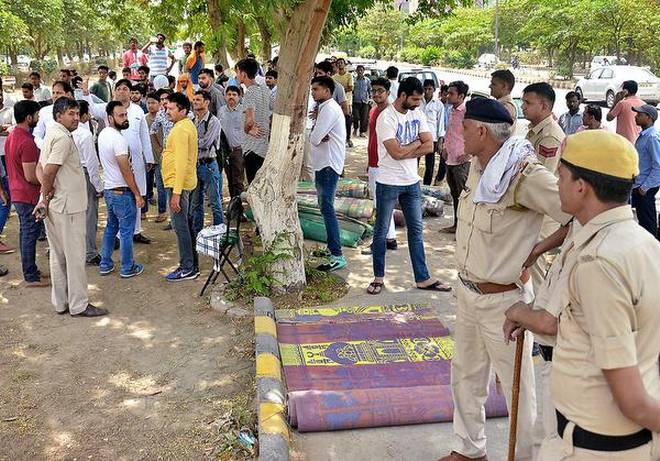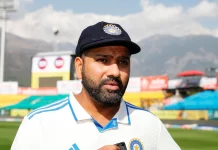India’s Murderous Mobs
www.siyasat.net news desk *Fr. Cedric Prakash SJ
On 17 July renowned social activist and Arya Samaj leader Swami Agnivesh was brutally beaten up and verbally abused in Jharkhand by a violent mob apparently having allegiance with the ruling BJP. Fortunately, they did not succeed in murdering the seventy-nine year old Swami. However, a couple of day earlier, thirty-two year old Mohammed Azam, a techie from Hyderabad, who worked with Accenture, was not so lucky. Suspected to be a ‘child abductor’ because of some rumours, he was lynched to death with stones and wooden sticks, when on a visit with family and friends, to Bidar District in Karnataka.
India’s murderous mobs are on the rampage as never before! Lynching has become the new normal in India! There can be no debate about that. It is visible, it is violent. The victims are invariably from minority and marginalized communities; someone regarded as an ‘outsider’ who is not ‘one of us’; or someone like Swami Agnivesh who has visibly and vocally taken a stand against the unconstitutional actions of the ruling class. The tragedy of lynchings in India today, is that they apparently have the official sanction by the Government of the day; in fact, some of the central ministers, in the recent past, have publicly anointed those responsible for these bloody murders. All this portends ill for the future of the country.
‘Lynching’ is best described as “a premeditated extrajudicial killing by a group. It is most often used to characterize informal public executions by a mob in order to punish an alleged transgressor, or to intimidate a group. It is an extreme form of informal group social control and often conducted with the display of a public spectacle for maximum intimidation”. Lynching must be considered as an act of terrorism and punishable by law. Instances of lynchings and similar mob violence can be found in every society. However, the lynchings in India, particularly in the last four years, must surely give the country the pride of place among the violent nations of the world today.
Mob violence or lynching is certainly not a new phenomenon in India. It has been taking place with frightening regularity all over the country. In November 1984, in the wake of the assassination of the then Prime Minister Indira Gandhi, the country witnessed mobs going round in Delhi and other parts of North India singling out Sikh men and brutally murdering them . Much of this was documented however; most of the big perpetrators were allowed to go scot-free. Sadly, after so many years many of the victims still do not have the comfort of experiencing a sense of closure to that terrible chapter of India’s history.
The Gujarat Carnage of 2002 apparently provided lynching with the aura and legitimacy with which it holds sway today. Rampaging and rapacious mobs murdered, raped, assaulted, looted, and burnt innocent and hapless Muslims all over the State. It is evidenced knowledge today that those who presided over these heinous crimes and instigated the unfettered mob violence were those who ruled the State. There were also two State Ministers in the police control room who were apparently issuing orders to the frenzied mobs. The police stood aside as mute spectators and sometimes even indulged in acts of violence. “We have no orders to save you!” is a retort from a police official to a Muslim victim desperately pleading to be saved.
Unofficial estimates state that more than two thousand Muslims were killed, many more injured and several thousands displaced in the bloodiest chapter of post-independent India. Thanks to the dogged efforts of several individuals and groups like the ‘Citizens for Justice and Peace’ (www.cjp.org.in) several of the perpetrators have been convicted and some have even been given life imprisonment. The plain truth is that the masterminds, the ‘big fish’ still remain free, roam the land with impunity, and have even managed to cloak themselves with immunity. That so many( and specially the powerful) could get away undoubtedly serves as a motivating factor to those anonymous individuals who are easily manipulated by the hate rhetoric, gossip and rumours that often fuel mob violence.
In March 2015, thousands of people broke into the Central Jail in Dimapur. They dragged out one Syed Khan, who was apparently arrested on rape charges. They stripped him; they beat him up, tied him to a motor cycle and dragged him for seven kilometres. He died on the way. The murderous mob then hung his body in full public view. Police reports state that it was not rape but that he had consensual sex with a local tribal woman and apparently paid her for it. In just about a year, there have been 27 lynchings across nine states in the country.
On 17 July (the very day Swami Agnivesh was brutalized), in a landmark judgment Supreme Court of India condemned the lynching incidents across the country. The Bench headed by Chief Justice Dipak said the horrendous acts of mobocracy could not be allowed to become a new norm in the Country. “The horrendous acts of mobocracy cannot be permitted to inundate the law of the land. Earnest action and concrete steps have to be taken to protect the citizens from the recurrent pattern of violence which cannot be allowed to become “the new normal”…The State cannot turn a deaf ear to the growing rumblings of its People, since its concern, to quote Woodrow Wilson, ‘must ring with the voices of the people.’ The exigencies of the situation require us to sound a clarion call for earnest action to strengthen our inclusive and all-embracing social order, which would, in turn, reaffirm the constitutional faith. We expect nothing more and nothing less”
The Supreme Court further observed that it is the duty of the State to ensure that the machinery of law and order functions efficiently and effectively in maintaining peace so as to preserve our quintessentially secular ethos and pluralistic social fabric. “In times of chaos and anarchy, the State has to act positively and responsibly to safeguard and secure the constitutional promises to its citizens”. The Court has recommended to Parliament to enact a separate law to punish those responsible for lynchings. “These have to be curbed with an iron hand…no citizen can take law into his hands or become a law on to himself”. Earlier on 3 July, the Supreme Court of India stated that violence in the name of cow vigilantism was not acceptable. “This is a law and order issue and each state has to be responsible. These kind of incidents cannot occur. It cannot be accepted in remotest sense. It is obligation of the states to ensure that such incidents do not occur,”
The recent Supreme Court judgement is certainly in the right direction. The big question however is, what happens if (as is blatantly obvious) in some states, the Government and the law and order mechanism are in connivance with the murderous mobs? Recently, Central Minister Jayant Sinha garlanded and felicitated eight men convicted of lynching a Muslim coal trader in a case of alleged cow vigilantism; earlier Gyan Ahuja the Alwar BJP MLA justified the murder of Pehlu Khan a dairy farmer who was also beaten to death by cow vigilantes; Union Minister Mahesh Sharma identified with the family of one of the accused in the Dadri lynching case. All these are not aberrations but a carefully orchestrated manner of the Government providing legitimacy to these crimes against humanity.
The Government and the police very conveniently shift the onus to rumours and ‘fake news’ spread via WhatsApp or other social media. One must be aware of the tremendous harm that can be caused through ‘fake news’. Pope Francis in a message for World Communications Day 2018 has warned us about this. However, in an Indian context, this can also be a very convenient ploy by the Government, to take control of social media. There are umpteen examples where social media does not egg mobs to murder another. If the Government was serious about controlling the lynching, they should have first booked their Ministers and others of their ilk, who through hate speeches target the minorities, the poor, the marginalized and those who are critical of the ruling party! There seems be a general apathy and the lack of a political will to deal with the murderous mobs; the reasons are obvious! Besides, police lethargy and even inaction in some of these crimes, is a major cause of concern.
A new ‘special anti-lynching’ law will not easily quell the murderous mobs. The Government has to make it clear, as per the directives of the Supreme Court, that lynching and mobocracy will not be tolerated; the only way it can demonstrate their commitment to this ‘zero tolerance’ is to first effectively punish the ‘Godses’ and other murderers within its own ranks! *(Fr. Cedric Prakash SJ, is a human rights activist. Contact: cedricprakash@gmail.com ) This is personal view of author































